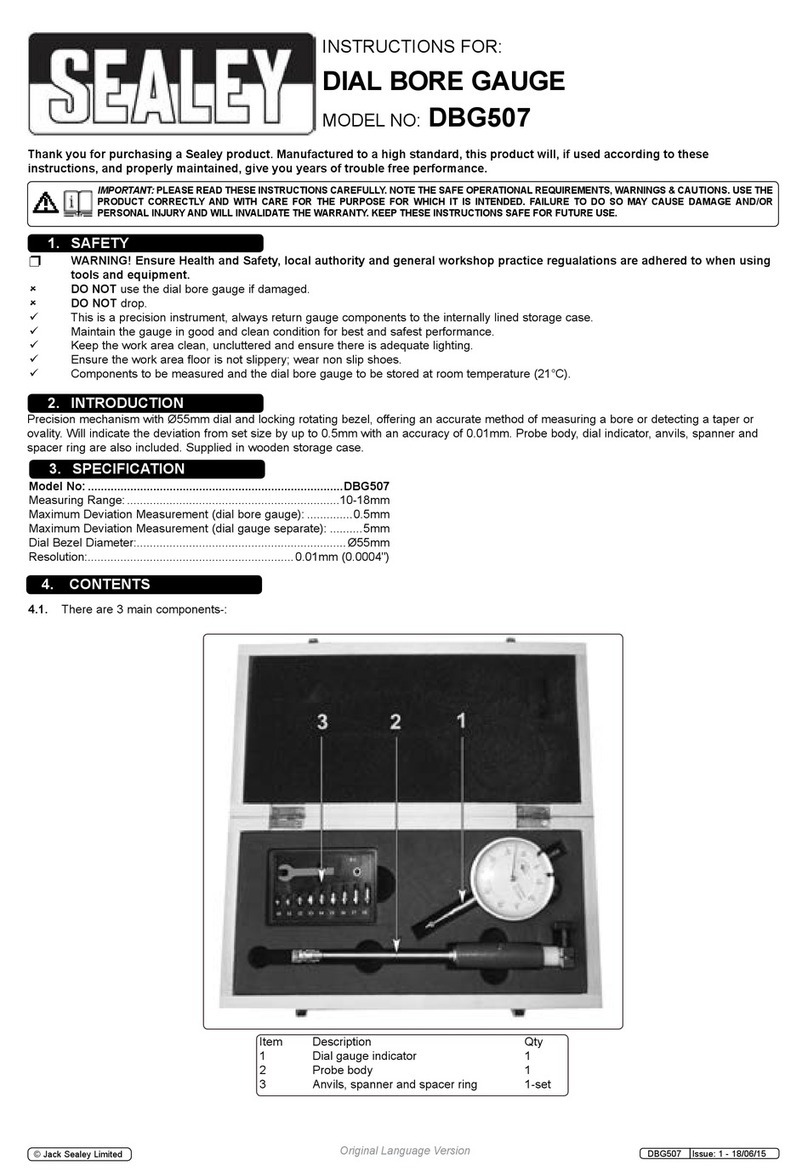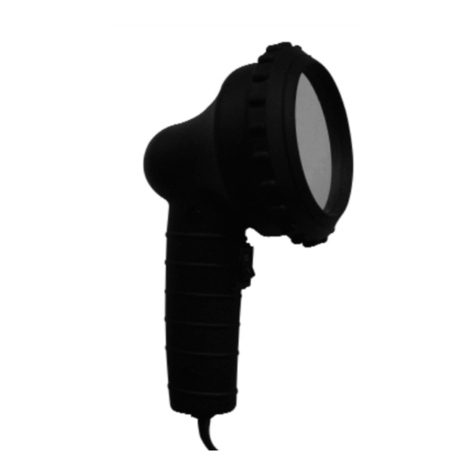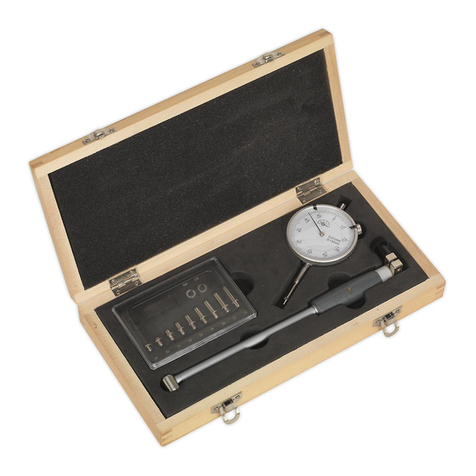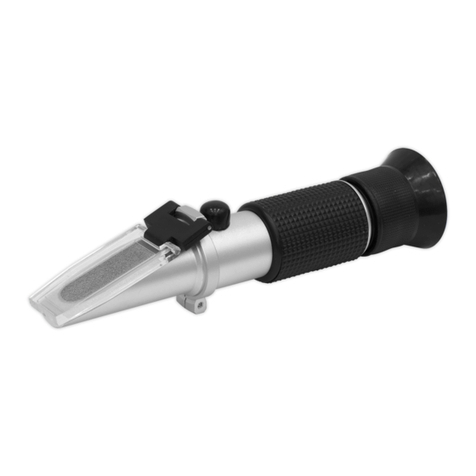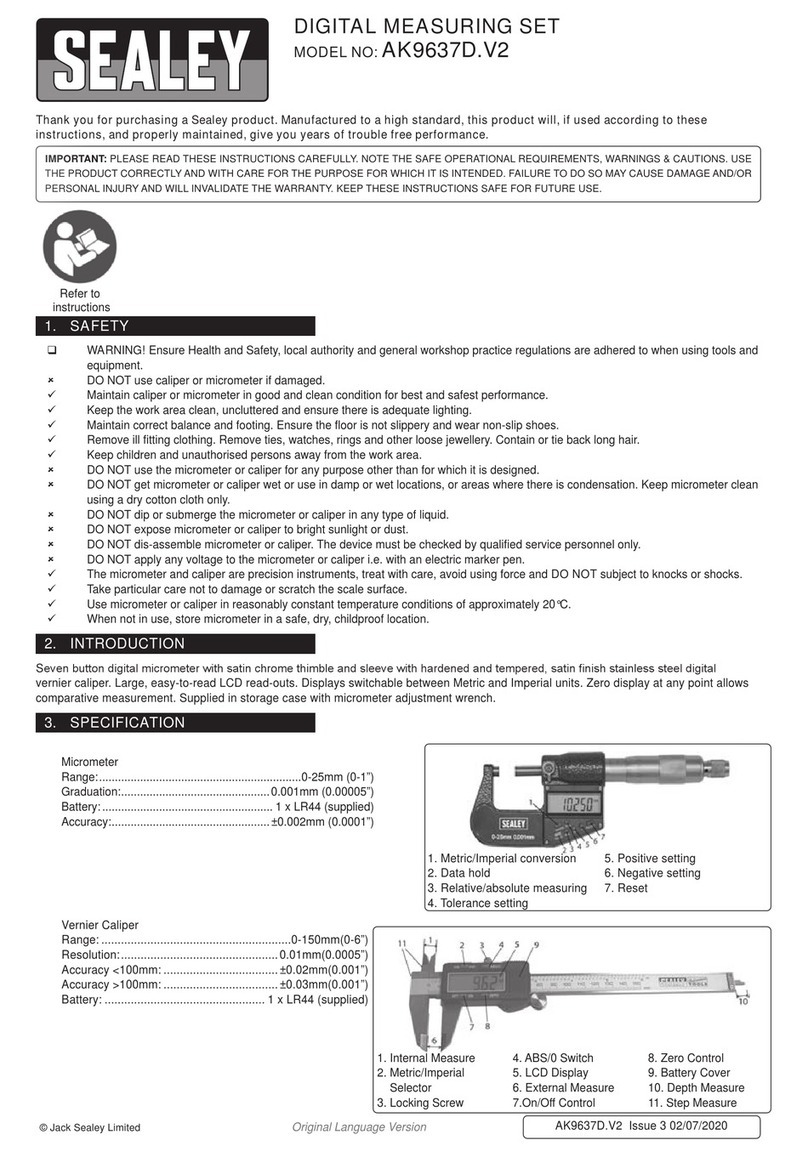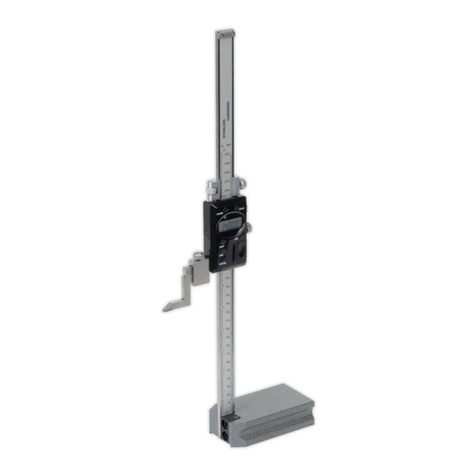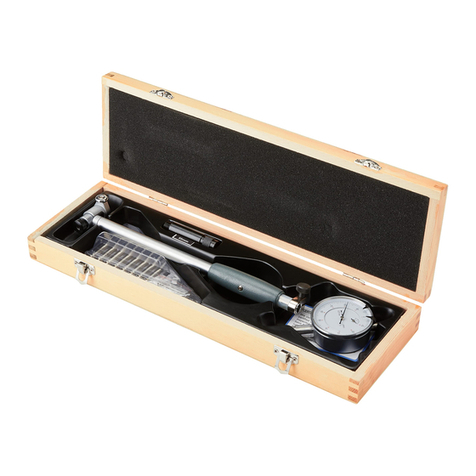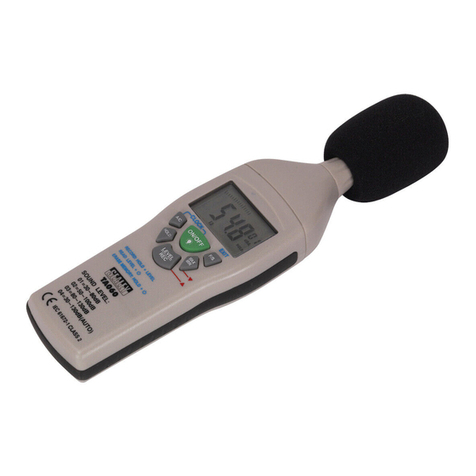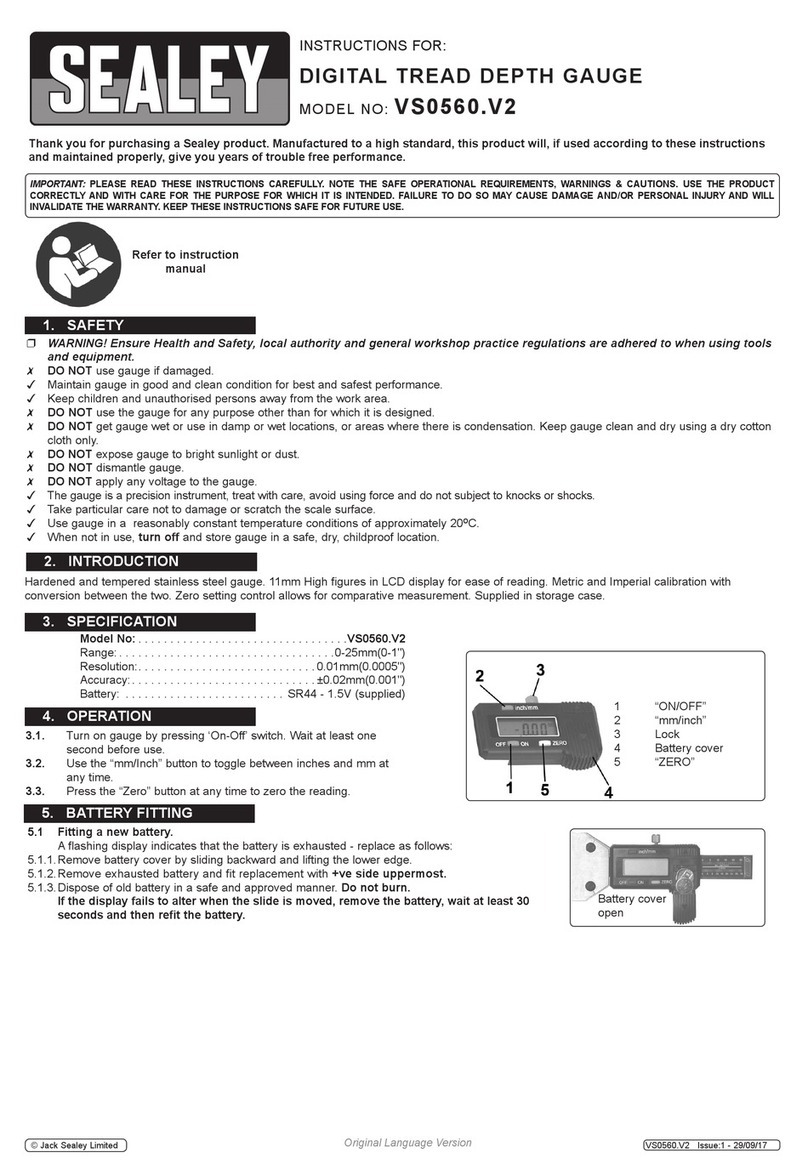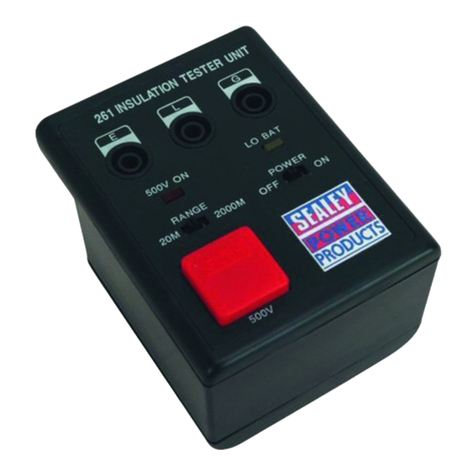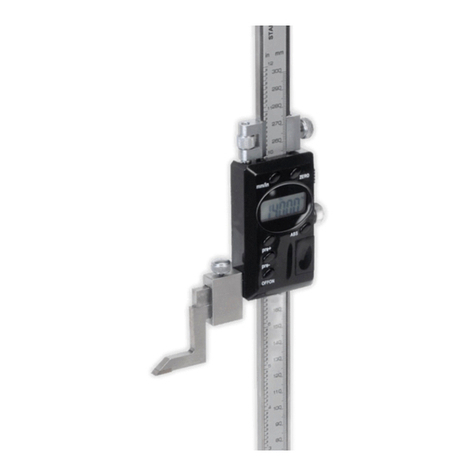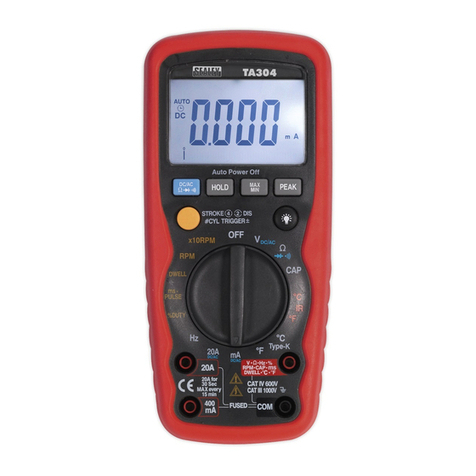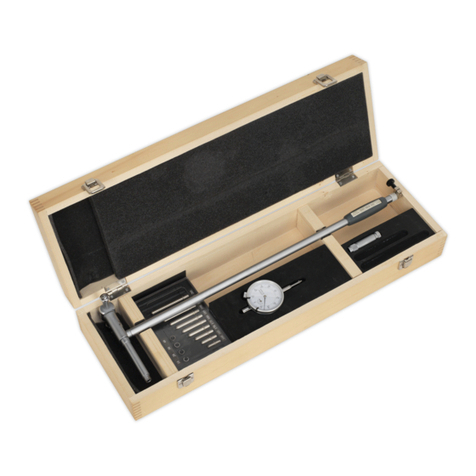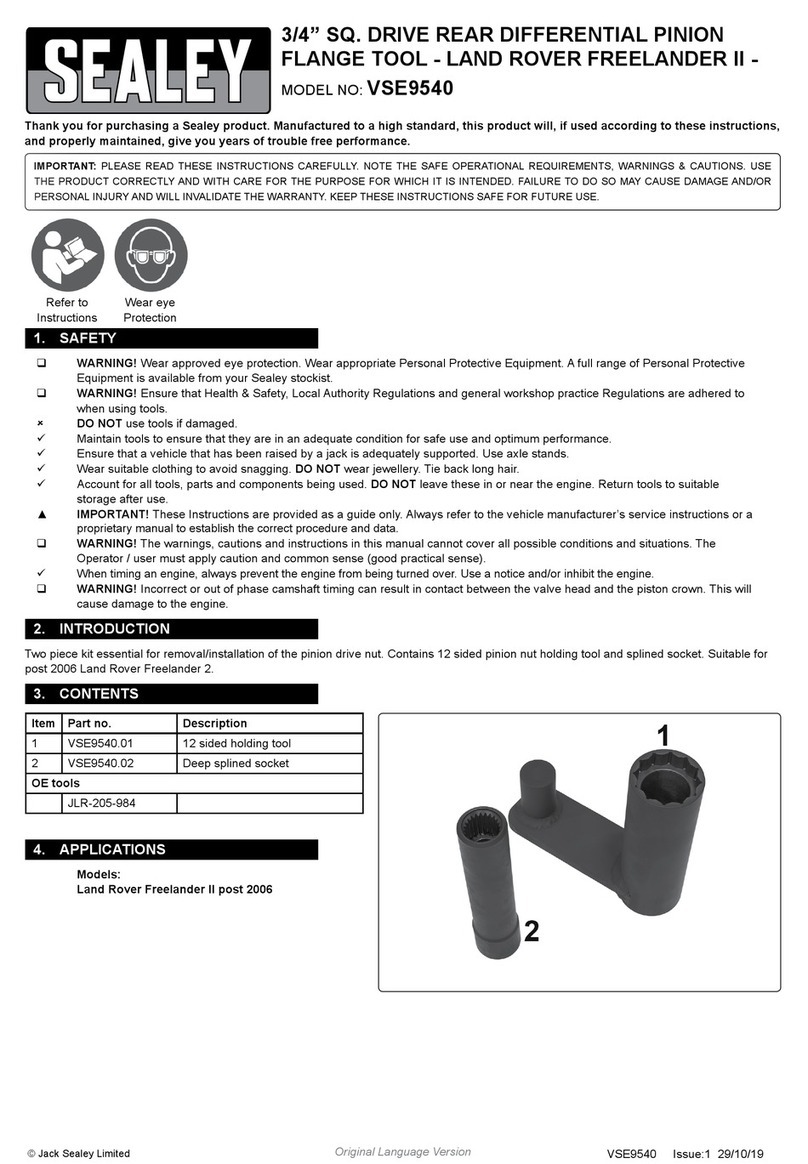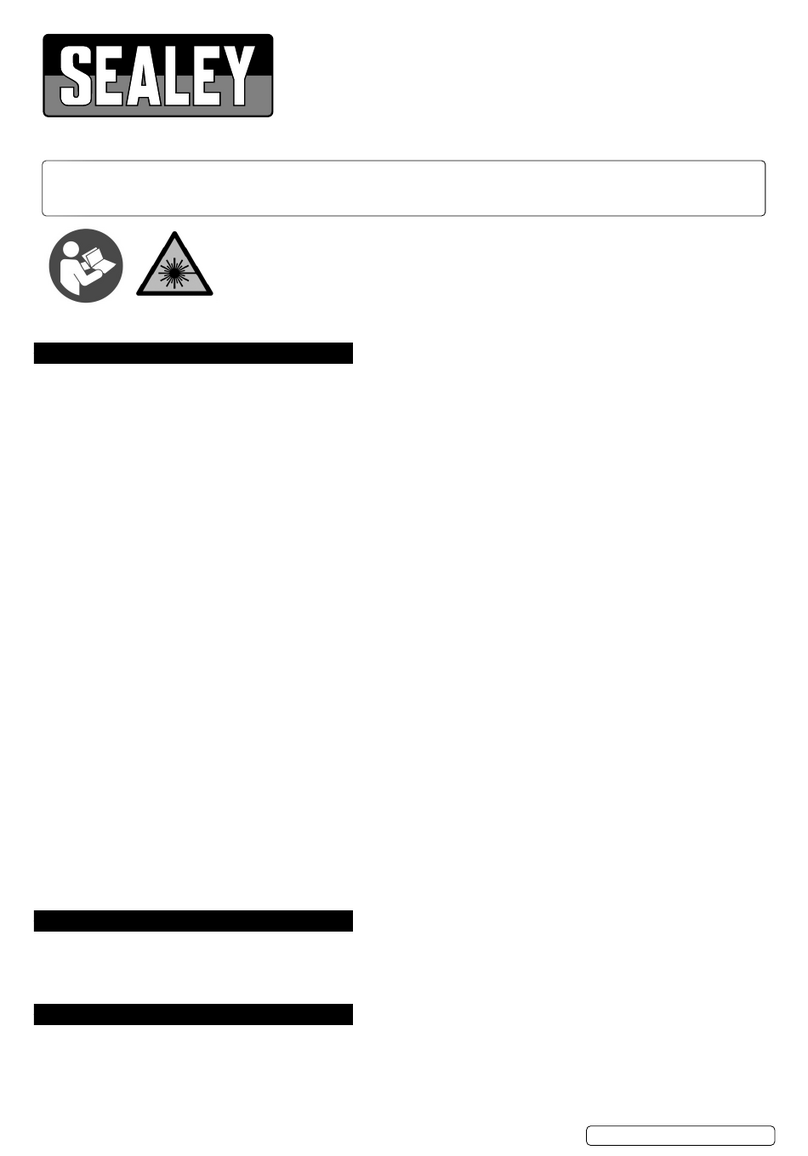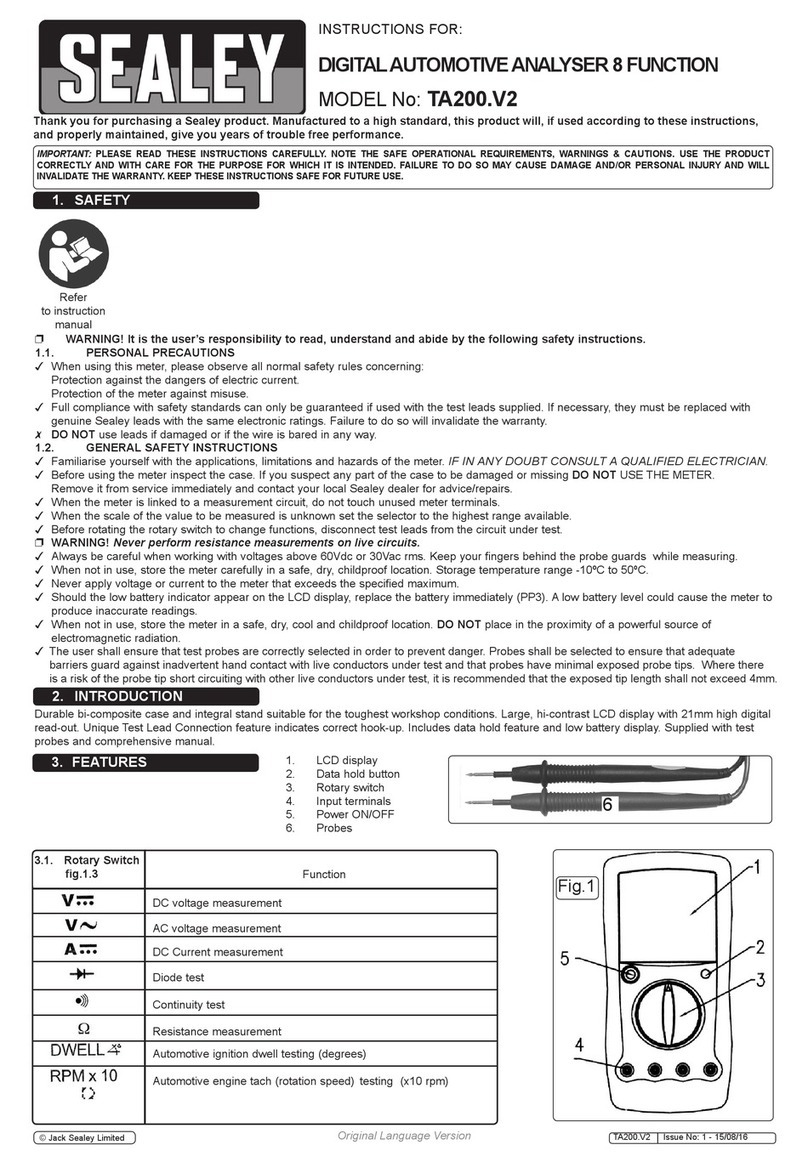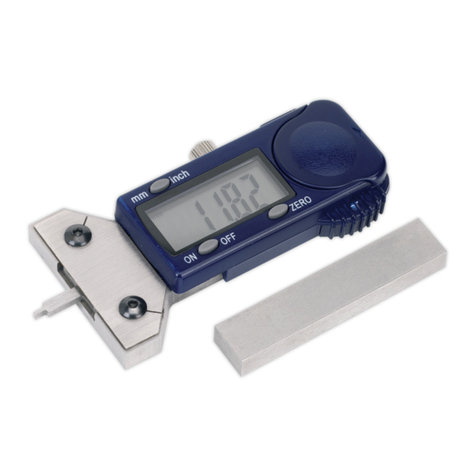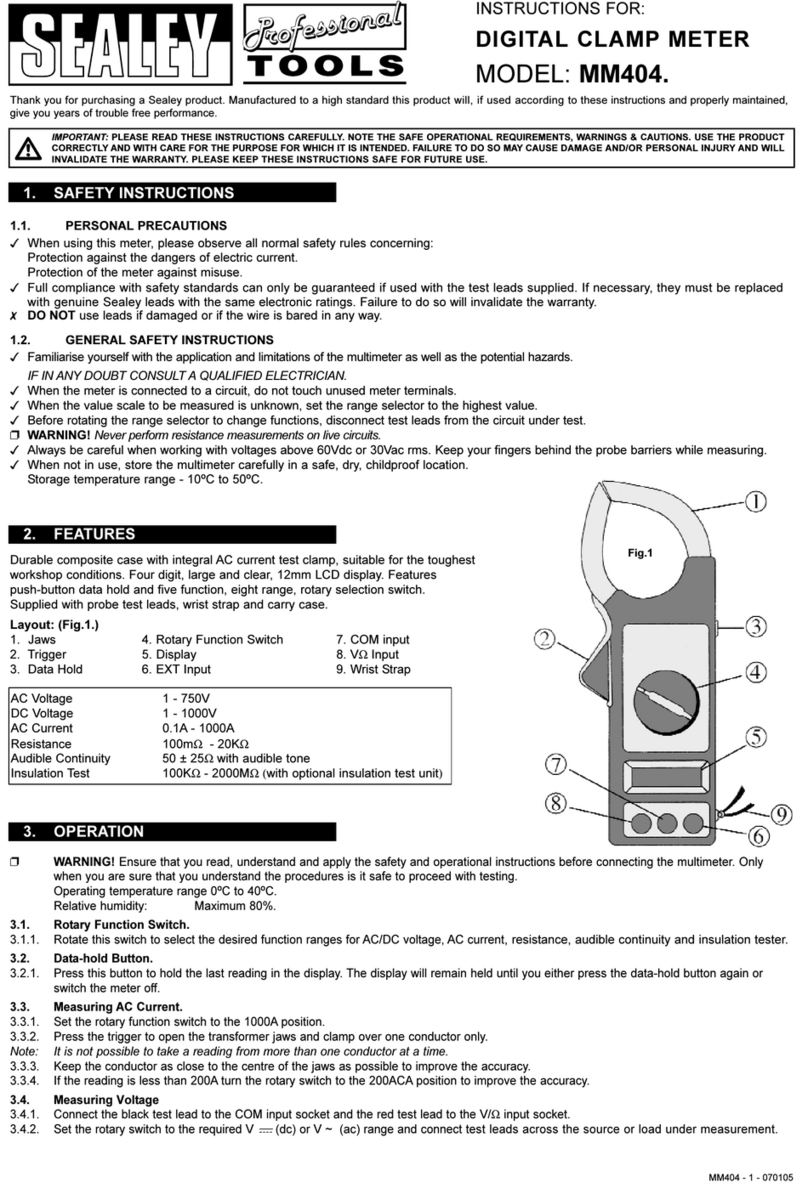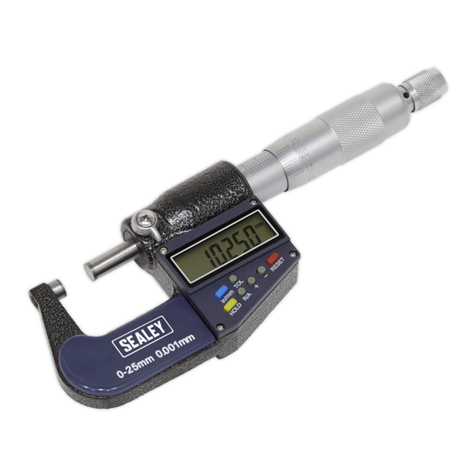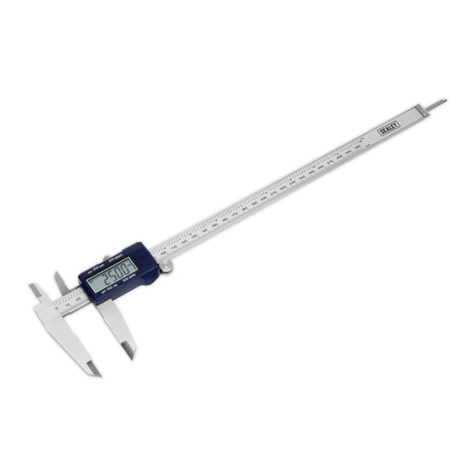
NOTE: It is our policy to continually improve products and as such we reserve the right to alter data, specifications and component parts without prior notice.
IMPORTANT: Noliabilityisacceptedforincorrectuseofthisproduct.
WARRANTY: Guaranteeis12monthsfrompurchasedate,proofofwhichwillberequiredforanyclaim.
INFORMATION:Foracopyofourlatestcatalogueandpromotionscalluson01284757525andleaveyourfullnameandaddress,includingpostcode.
01284 757500
01284 703534
sales@sealey.co.uk
Sole UK Distributor, Sealey Group,
KempsonWay,SuffolkBusinessPark,
BurySt.Edmunds,Suffolk,
IP327AR
www.sealey.co.uk
Web
email
1. SAFETY PRECAUTIONS.
WearsafetyeyeprotectionthatmeetsANSIstandards.
Operatethevehicletobetestedinawellventilatedarea.Exhaustgasesare
poisonous.Ifnecessaryconnectthevehicleexhausttoafumeextractionsystem.
Placechocksinfrontofthedrivewheelsandneverleavethevehicleunattended
whilsttestingisinprogress.
Beextracautiouswhenworkingincloseproximitytotheignitioncoil,distributor
cap,ignitionwiresandsparkplugs.Thesecomponentscreatehazardousvoltages
whentheengineisrunning.
Ensurethatthehandbrakeisonandthegearboxisinneutralor‘Park’for
automatic transmissions.
Keepreextinguishersnearbysuitableforgasoline/chemical/electricalres.
Keepthecodereadercleanandingoodcondition.
Remainvigilantwhenusingthecodereaderon,ornear,machinerywherethereare
rotationalpartssuchasbelts,pulleysandfans.
Removeillttingclothing.Removeties,watches,rings,andotherloosejewellery,
andcontainand/ortiebacklonghair.
Maintaincorrectbalanceandfooting.Ensuretheoorisnotslipperyandwear
non-slipshoes.
KeepProductSurfacesCleanandDry.
DO NOTattempttoconnectordisconnectanytestequipmentwhilsttheignition
isonortheengineisrunning.
DO NOTusethecodereaderifdamageissuspected.Ifsuspecteddamageoccurs
withthedevice,haveitinspectedbyqualiedservicepersonnelbeforeusingit
again.
DO NOTgetthecodereaderwetoruseindamporwetlocationsorareaswhere
there is condensation.
DO NOTusethecodereaderforanypurposeotherthanforwhichitisdesigned.
DO NOT allow untrained persons to use code reader.
DO NOTusethecodereaderwhenyouaretiredorundertheinuenceof
alcohol,drugsorintoxicatingmedication.
DO NOToperateinapotentiallyexplosiveenvironment/atmosphere.
WARNING:Thewarnings,cautionsandinstructionsdiscussedinthisinstruction
manualcannotcoverallpossibleconditionsandsituationsthatmayoccur.Itmust
beunderstoodthatcommonsenseandcautionarefactorswhichcannotbebuilt
intothisproduct,butmustbeappliedbytheoperator.
IMPORTANT: PLEASE READ THESE INSTRUCTIONS CAREFULLY. NOTE THE SAFE OPERATIONAL REQUIREMENTS,
WARNINGS AND CAUTIONS. USE THIS PRODUCT CORRECTLY AND WITH CARE FOR THE PURPOSE FOR WHICH IT
IS INTENDED. FAILURE TO DO SO MAY CAUSE DAMAGE AND/OR PERSONAL INJURY AND WILL INVALIDATE THE
WARRANTY. PLEASE KEEP INSTRUCTIONS SAFE FOR FUTURE USE.
Original Language Version TA500 Issue No.1 18/02/13
© Jack Sealey Limited
1

